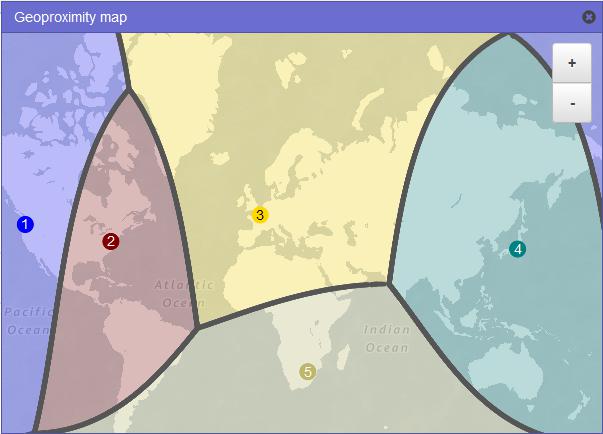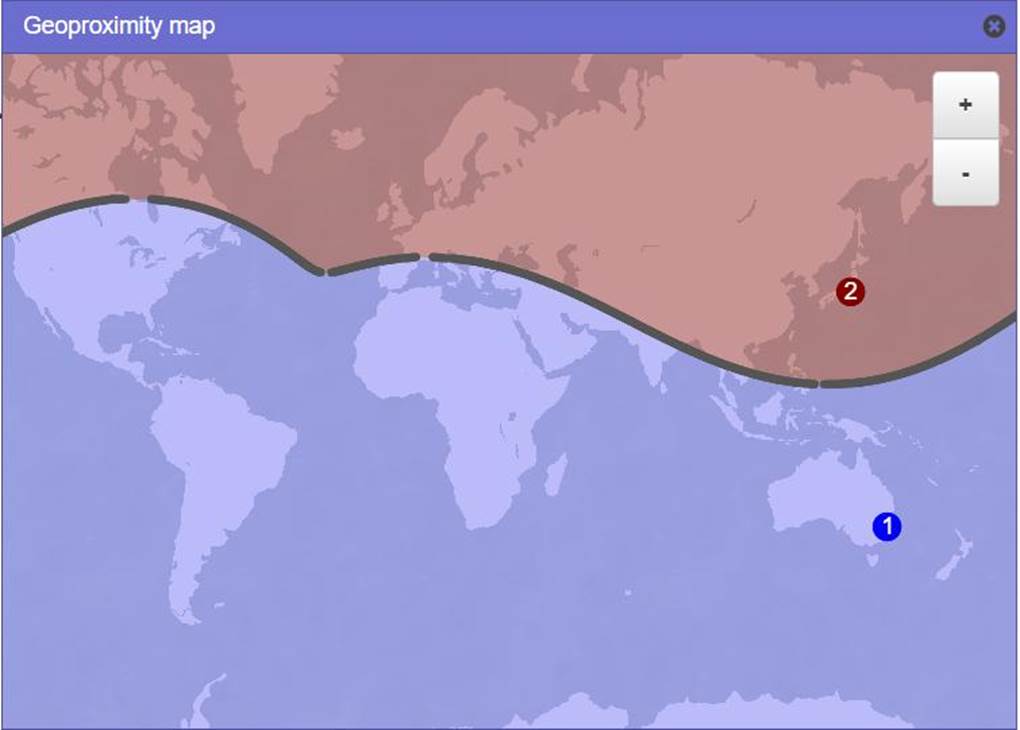- All Exams Instant Download
Which Route 53 routing policy should the Solutions Architect use?
A company runs a messaging application in the ap-northeast-1 and ap-southeast-2 region. A Solutions Architect needs to create a routing policy wherein a larger portion of traffic from the Philippines and North India will be routed to the resource in the ap-northeast-1 region .
Which Route 53 routing policy should the Solutions Architect use?
A . Latency Routing
B . Weighted Routing
C . Geoproximity Routing
D . Geolocation Routing
Answer: C
Explanation:
Amazon Route 53 is a highly available and scalable Domain Name System (DNS) web service. You can use Route 53 to perform three main functions in any combination: domain registration, DNS routing, and health checking. After you create a hosted zone for your domain, such as example.com, you create records to tell the Domain Name System (DNS) how you want traffic to be routed for that domain. For example, you might create records that cause DNS to do the following:
Route Internet traffic for example.com to the IP address of a host in your data center.
Route email for that domain ([email protected]) to a mail server (mail.tutorialsdojo.com). Route traffic for a subdomain called operations.manila.tutorialsdojo.com to the IP address of a different host.
Each record includes the name of a domain or a subdomain, a record type (for example, a record with a type of MX routes email), and other information applicable to the record type (for MX records, the hostname of one or more mail servers and a priority for each server).

Route 53 has different routing policies that you can choose from. Below are some of the policies:
Latency Routing lets Amazon Route 53 serve user requests from the AWS Region that provides the lowest latency. It does not, however, guarantee that users in the same geographic region will be served from the same location.
Geoproximity Routing lets Amazon Route 53 route traffic to your resources based on the geographic location of your users and your resources. You can also optionally choose to route more traffic or less to a given resource by specifying a value, known as a bias. A bias expands or shrinks the size of the geographic region from which traffic is routed to a resource.
Geolocation Routing lets you choose the resources that serve your traffic based on the geographic location of your users, meaning the location that DNS queries originate from.
Weighted Routing lets you associate multiple resources with a single domain name (tutorialsdojo.com) or subdomain name (subdomain.tutorialsdojo.com) and choose how much traffic is routed to each resource.
In this scenario, the problem requires a routing policy that will let Route 53 route traffic to the resource in the Tokyo region from a larger portion of the Philippines and North India.

You need to use Geoproximity Routing and specify a bias to control the size of the geographic region from which traffic is routed to your resource. The sample image above uses a bias of -40 in the Tokyo region and a bias of 1 in the Sydney Region. Setting up the bias configuration in this manner would cause Route 53 to route traffic coming from the middle and northern part of the Philippines, as well as the northern part of India to the resource in the Tokyo Region. Hence, the correct answer is: Geoproximity Routing.
Geolocation Routing is incorrect because you cannot control the coverage size from which traffic is routed to your instance in Geolocation Routing. It just lets you choose the instances that will serve traffic based on the location of your users.
Latency Routing is incorrect because it is mainly used for improving performance by letting Route 53
serve user requests from the AWS Region that provides the lowest latency.
Weighted Routing is incorrect because it is used for routing traffic to multiple resources in proportions
that you specify. This can be useful for load balancing and testing new versions of a software.
References:
https://docs.aws.amazon.com/Route53/latest/DeveloperGuide/routing-policy.html#routing-policy-geoprox
imity
https://docs.aws.amazon.com/Route53/latest/DeveloperGuide/rrsets-working-with.html
Latency Routing vs Geoproximity Routing vs Geolocation Routing:
https://tutorialsdojo.com/latency-routing-vs-geoproximity-routing-vs-geolocation-routing/
Latest SAA-C03 Dumps Valid Version with 400 Q&As
Latest And Valid Q&A | Instant Download | Once Fail, Full Refund
Subscribe
Login
0 Comments
Inline Feedbacks
View all comments

